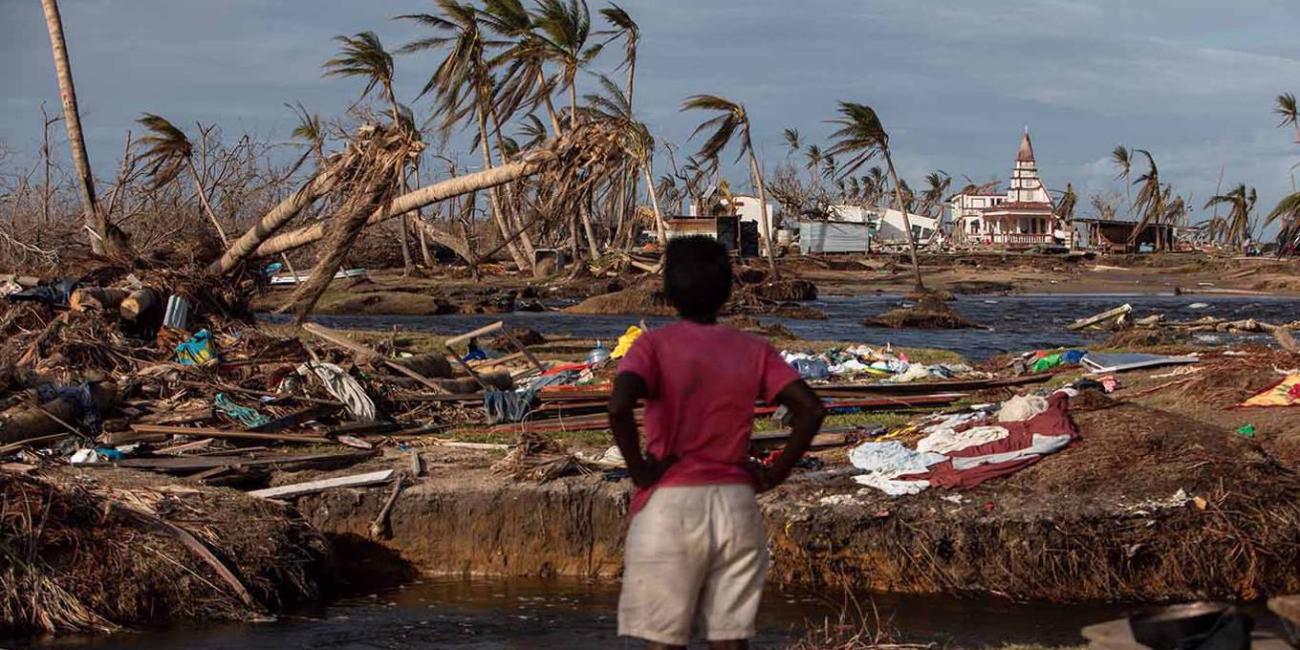The Decade of Action and Small Island Developing States: Measuring and addressing SIDS’ vulnerabilities to accelerate SDG progress

UN Timor-Leste Resident Coordinator Roy Trivedy participated in a discussion organised by the United Nations Resident Coordinators.
UN Timor-Leste Resident Coordinator Roy Trivedy participated in a discussion organised by the United Nations Resident Coordinators for the Small Island Developing States (SIDS) and the Sustainable Development Solutions Network (SDSN) under the coordination of Prof. Jeffrey Sachs for the purpose to look at the multidimensional vulnerability index (MVI), measure and address SIDS’ vulnerabilities to accelerate SDG progress.
Small Island Developing States (SIDS) face a unique set of vulnerabilities that impede their ability to achieve sustainable development. Structural factors, including their size, remoteness, limited resource base, market size, exposure to climate risks and natural disasters, impact socio-economic outcomes and their ability to achieve the SDGs.
Roy Trivedy noted it was particularly worth listening to the remarks by Professor Jeff Sachs at the beginning of the discussion that how his points are relevant for Timor-Leste. “Prof Sachs makes the point that for most countries to achieve the SDGs it is vital that they have access to concessional financing. But there is a crisis in development finance. Richer countries are able to borrow money at very low rates of interest whilst many poorer countries especially debt distressed countries are struggling to borrow additional finance at concessional rates. We need to ensure that through the OECD DAC and IFIs the richer countries make it more possible for poorer countries to borrow at zero or near zero interest rates to be able to recover post-pandemic and support early recovery”, Mr Trivedy elaborated.
“Prof Sachs further explains that the MVI looks at three specific structural features of SIDS: (i) they generally have small not very diversified economies (the exception is Singapore), reliant on producing a few commodities, with high dependence on tourism and remittances and have difficulties to cope with economic shocks; (ii) Most of the SIDS are remote and off the beaten track with poor transport connectivity; (iii) they are particularly vulnerable to natural disasters and climate shocks. The IMF have recently calculated that most SIDS need to increase investment in infrastructure by between 6-10% post pandemic to meet the extra costs associated with their vulnerabilities.”
Mr Trivedy also noted, “Prof Sachs states that on a per capita basis SIDS have hardly contributed anything historically to global warming but they are disproportionately affected by the impact of the climate crisis. At the Paris Meeting, richer countries refused to accept responsibility for losses and damages suffered by poorer nations as a result of climate change by the SIDS and other poorer countries. The G20 meeting in Bali in 2022 will provide a good venue to further this discussion and see whether there is really an appetite for redesigning the criteria for allocating development finance.”
Please find below weblinks to two relevant and valuable resources for further reading:
Measuring and Addressing SIDS’ Vulnerabilities to accelerate SDG progress
https://resources.unsdsn.org/the-decade-of-action-and-small-island-developing-states
The Rich World’s Debt to the Island States By Prof Geoffrey Sachs


















